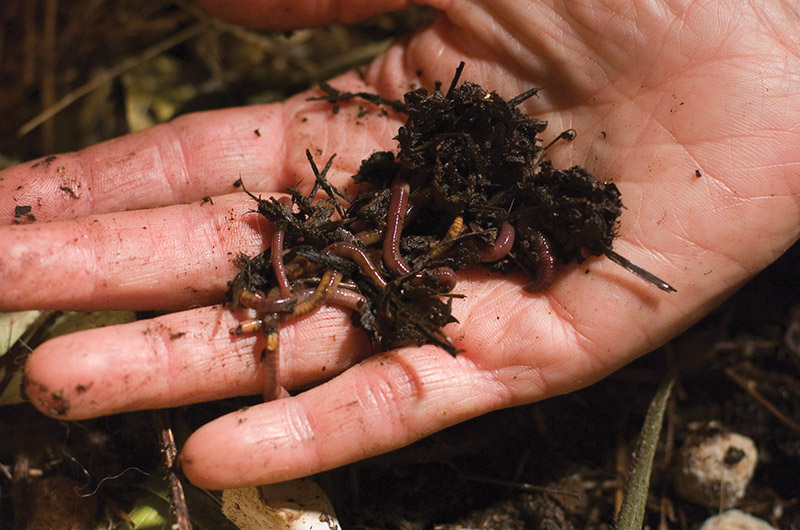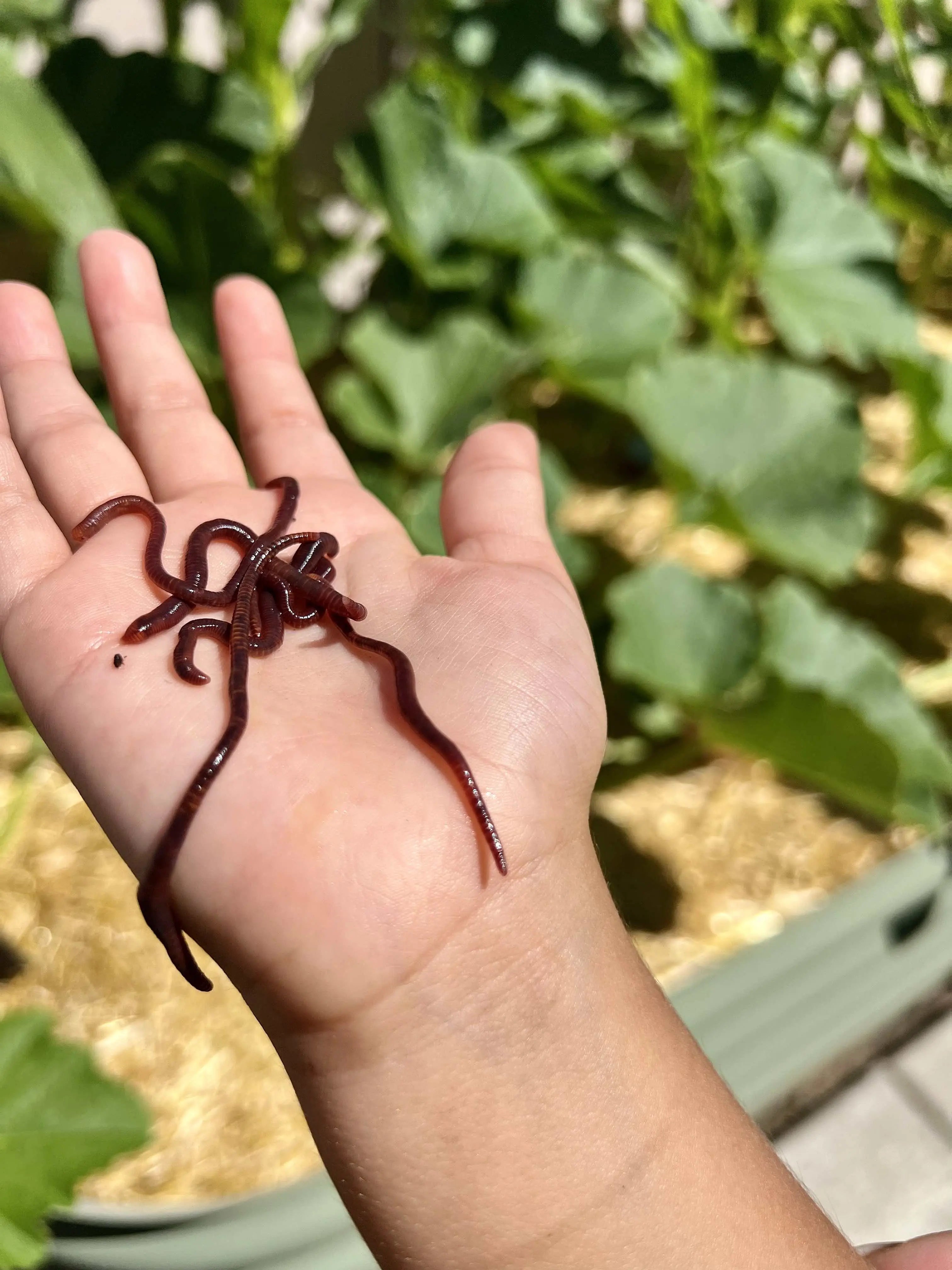Red Wiggler Worms - Perfect for Vermicomposting and Soil Enrichment
Red Wiggler Worms - Perfect for Vermicomposting and Soil Enrichment
Blog Article
Red Wiggler Worms Demystified: Unlocking the Tricks of Vermiculture for Greener Living and Nutrient-Rich Soil
In the realm of sustainable methods for enriching dirt quality and advertising eco-conscious living, red wiggler worms play a crucial yet typically forgotten role. These humble animals have the remarkable ability to transform natural waste right into nutrient-rich castings that function as a powerful all-natural plant food. By delving into the world of vermiculture, one can discover a huge selection of advantages that prolong much past typical composting approaches. Understanding the ins and outs of taking care of these worms, optimizing their atmosphere, and harnessing their castings can bring about a greener way of life and much healthier soil for plants to grow.
The Duty of Red Wiggler Worms
Red Wiggler worms play an important function in composting systems by successfully breaking down natural issue into nutrient-rich spreadings. These ravenous eaters consume a range of organic products, such as kitchen scraps, yard waste, and paper items. As they feed, the worms' digestion procedures break down the organic matter into a fine, dark, and nutrient-dense material referred to as worm spreadings or vermicompost.
The spreadings generated by Red Wiggler worms are very beneficial for dirt wellness and plant growth. They are rich in essential nutrients like nitrogen, phosphorus, and potassium, which are essential for sustaining healthy plant growth. Furthermore, worm spreadings include valuable microbes and enzymes that assist boost dirt structure, boost water retention, and boost nutrient uptake by plants.
Advantages of Vermicomposting

It boosts soil structure, enhances soil aeration, and enhances dirt dampness retention. Vermicompost also enhances the dirt with essential nutrients like potassium, nitrogen, and phosphorus, promoting plant growth and total dirt fertility.
Additionally, vermicomposting assistances sustainable horticulture techniques by offering a natural and chemical-free alternative to synthetic fertilizers. Red Wiggler Worms. This ecologically pleasant approach not only enriches the soil however likewise assists minimize dependence on unsafe chemicals, advertising a greener and more sustainable way of gardening
Establishing Up a Worm Container
When establishing a worm bin for vermicomposting, appropriate arrangement is important to ensure the success of the composting process. The primary step in setting up a worm bin is selecting a suitable container. This can be a plastic bin or wood box that gives adequate room for the worms to relocate around and has proper drain holes to stop waterlogging. Next, a bedding material such as shredded paper, cardboard, or coconut coir should be included in the container. This bed linens supplies a comfortable environment for the worms and aids keep wetness levels.
After adding the bed linens, introduce the red wiggler worms to the bin. It is advised to begin with a handful of worms and progressively boost as they multiply. The worms should after that be offered with food scraps such as fruit and vegetable peels, coffee premises, and eggshells. It is crucial to prevent adding meat, milk, oily, or salted foods to stop attracting pests and developing unpleasant smells.
Frequently monitor the dampness levels and temperature in the worm container to guarantee optimum conditions for the worms. With correct setup and upkeep, the worm container will efficiently transform organic waste into nutrient-rich garden compost for your plants and garden.
Collecting Worm Castings
To successfully accumulate nutrient-rich worm castings from your vermicomposting system, a methodical harvesting method is crucial. When it comes time to gather the worm spreadings, there are a few essential actions to comply with to make sure a successful process.

Troubleshooting Common Issues
Determining and resolving usual challenges that might emerge during the vermicomposting procedure is important for preserving a healthy and balanced and effective worm bin. One common concern that vermicomposters experience is overfeeding. Adding excess food scraps can result in a buildup of moisture and acidity in the worm container, possibly hurting the worms. To stop this, feed the worms in small amounts, making certain that the food scraps are adequately damaged down before adding extra. An additional problem is unpleasant smells originating from the worm bin. Foul scents show anaerobic conditions, generally triggered by overwatering or inadequate air flow. To fix this, adjust the dampness levels by adding completely dry bed linen materials like shredded newspaper or cardboard and rise oygenation by transforming the bed linens regularly.
Additionally, if the worm populace is decreasing or the worms appear harmful, it might be as a result of ecological stress factors such as extreme temperatures or pH degrees. Checking these elements and making necessary modifications is important for the wellness of the worms. By repairing these common problems without delay, vermicomposters can ensure a visit this website effective and smooth vermicomposting process while maintaining a growing worm populace.

Verdict
In verdict, red wiggler worms play an essential role in vermiculture by breaking down organic issue right into nutrient-rich dirt. The benefits of vermiculture include greener living and improved dirt top quality. Establishing a worm container is necessary for effective vermiculture, and gathering worm castings provides valuable garden compost for horticulture. By comprehending and get more troubleshooting common concerns, people can open the secrets of vermiculture for sustainable living and much healthier dirt.
As they feed, the worms' digestive procedures damage down the organic matter into a penalty, dark, and nutrient-dense product understood as worm castings or vermicompost.
The castings created by Red Wiggler worms are very advantageous for soil health and plant development. Adding excess food scraps can lead to a buildup of moisture and level of acidity in the worm container, possibly damaging the worms.Additionally, if the worm population is declining or the worms appear unhealthy, it could be due to ecological stressors such as extreme temperatures or pH degrees. Setting up a worm bin is essential for effective vermiculture, and gathering worm spreadings gives useful garden compost for horticulture.
Report this page